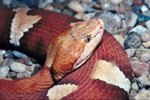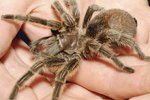
South Africa is teeming with wildlife, including a wide variety of spiders ranging from harmless creepy crawlers to aggressive and venomous eight-legged monsters. Most spiders will keep to themselves so long as they are not disturbed, but some are more aggressive than others. Knowing which ones pose the biggest threat can help you steer clear of spider danger in South Africa.
Six-Eyed Sand Spiders
Also known as crab spiders, six-eyed sand spiders bury themselves in the sand and wait patiently for their next victim to wander by. Equipped with powerful hemolyctic/necrotoxic venom that ravages tissue and causes internal bleeding, six-eyed sand spiders are the most poisonous spiders in South Africa. These spiders will bite if disturbed but are typically more shy than aggressive. While no deaths have been linked to six-eyed sand spider bites, avoiding encounters with this spider is advisable.
Button Spiders
Also known as widow spiders in other regions, buttons spiders are South Africa’s most poisonous arachnid inhabitants. Buttons spiders are armed with powerful neurotoxic venom that inflicts severe pain in bite victims and could potentially kill those with fragile or compromised immune systems like small children or elderly people. South Africa is home to six species of button spiders -- four species of black buttons spiders and two species of brown buttons spiders. The larger female button spiders sometimes kill their male counterparts after mating.
Sac Spiders
With a reputation for being most likely to bite humans, sac spiders are a force to be reckoned with in South Africa. Sac spider venom breaks down tissue and kills cells at the bite site with its cytotoxin properties. While not life-threatening, sac spider bites cause blistering, swelling and itching in the victim. The many different species of sac spiders living in South Africa are nocturnal hunters that retreat daily to protective silk sacs built underneath bark or stones.
Violin Spiders
Also known as brown recluse spiders in the United States, violin spiders sport a violin-shaped marking on the thorax. Though generally shy, violin spiders won’t hesitate to bite when threatened. Not unlike the punch delivered by sac spiders, violin spider bites are packed with cytotoxin venom that causes painful blistering and can result in a secondary infection if not properly treated in a timely manner. The 15 species of violin spiders living in South Africa are nocturnal hunters that spend their days sleeping in webs hidden beneath logs or rocks.
Baboon Spiders
Also known as the tarantulas of Africa, baboon spiders are generally shy but are known to defend themselves aggressively when threatened. Though their venom is not particularly harmful to humans, the baboon spider’s bite is capable of causing severe pain, nausea and weakness. More than 40 species of baboon spiders have taken up residence in Africa, where they dwell in silk burrows built on the ground. Some of the more common baboon spiders in South Africa include the horned baboon spider (Ceratogyrus), the golden-brown baboon spider (Pterinochilus) and the common baboon spider (Harpactira).
References
Photo Credits
-
BananaStock/BananaStock/Getty Images
Writer Bio
Kristina Barroso is a full-time teacher who has been freelance writing since 1991. She published her first book, a break-up survival guide, in 2007 and specializes in a variety of topics including, but not limited to, relationships and issues in education. She earned a Bachelor of Arts in Psychology from Florida International University.




